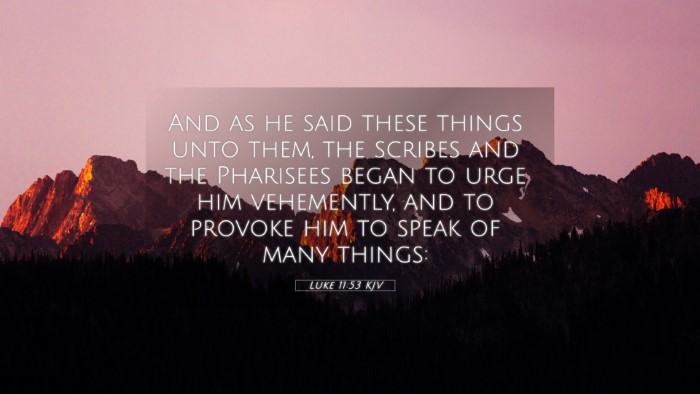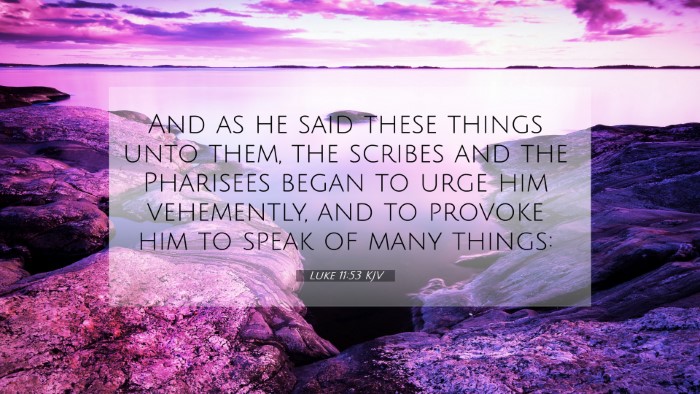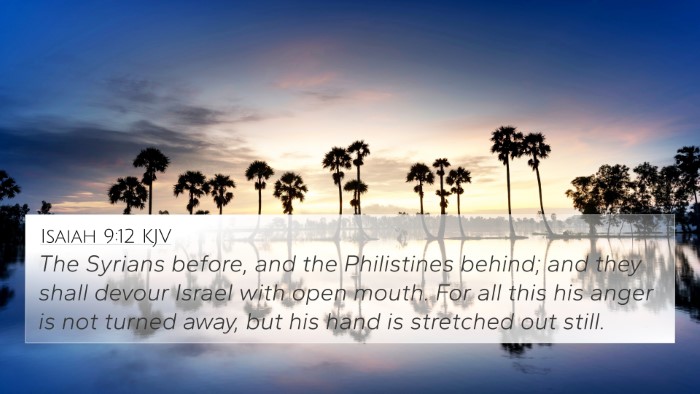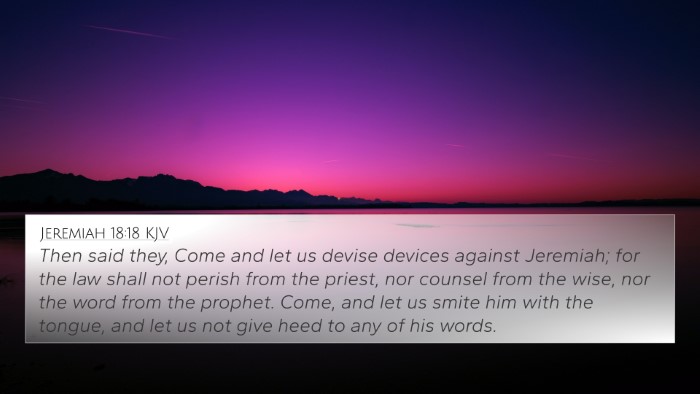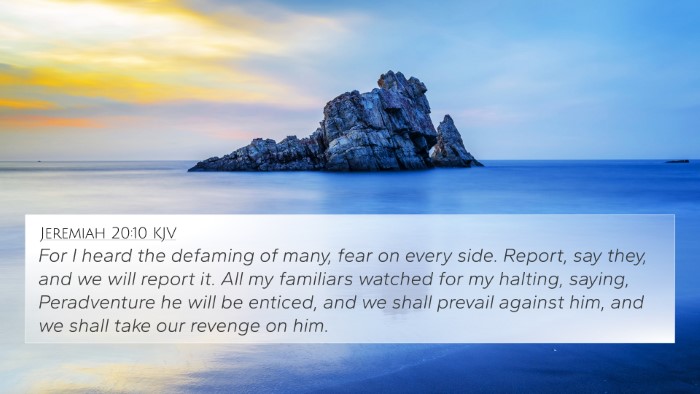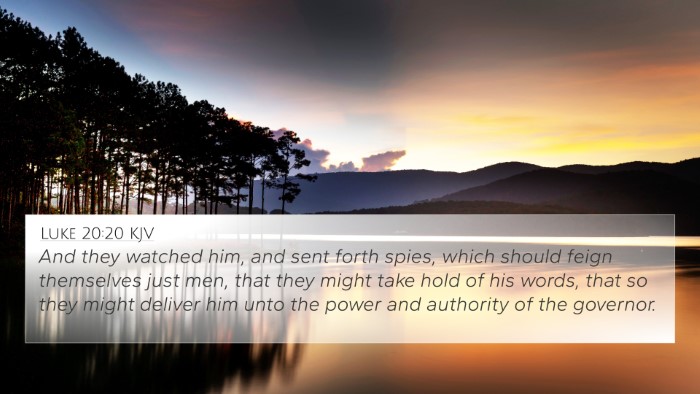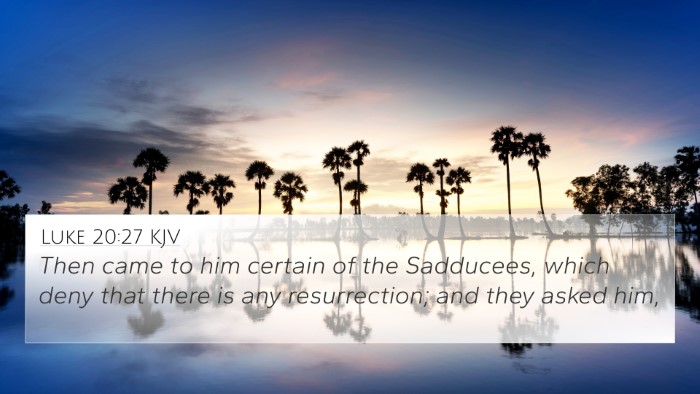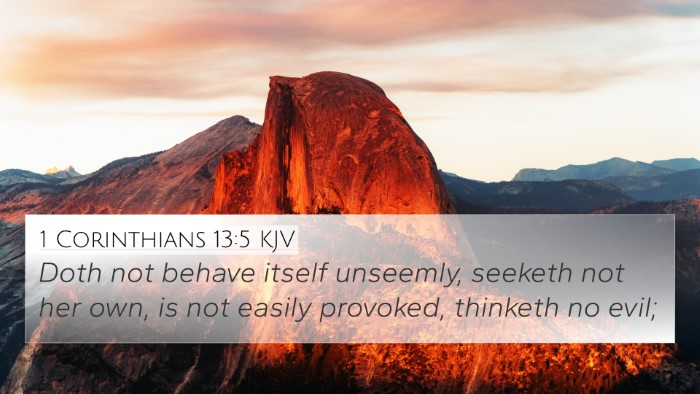Understanding Luke 11:53
Luke 11:53 reads: "And as He said these things to them, the scribes and the Pharisees began to oppose Him fiercely and to cross-examine Him about many things." This verse reflects a pivotal moment in Jesus' ministry, highlighting the tensions between Him and the religious leaders of the time.
Summary of Meaning
This verse underscores the growing hostility that Jesus faced from the religious elite, particularly the scribes and Pharisees. Their fierce opposition and attempts to entrap Him in His words signify not only their rejection of His message but also their broader resistance to His authority and the implications of His teachings.
Commentary Insights
- Matthew Henry: Henry points out that the scribes and Pharisees were deeply threatened by Jesus' teachings, which challenged their traditions and authority. He notes that instead of seeking truth, they focused on discrediting Him.
- Albert Barnes: Barnes emphasizes the relentless nature of the Pharisees' questioning, illustrating how they employed cross-examination as a means to trap Jesus into saying something they could use against Him. Their actions reveal their desire to maintain control over the religious narrative.
- Adam Clarke: Clarke observes that the confrontation signifies the climax of opposition to Jesus, and he interprets this as prophetic, predicting the eventual crucifixion that would come from such hostility. He suggests that their questioning is emblematic of a broader rejection of divine truth.
Cross-References to Luke 11:53
To deepen your understanding of Luke 11:53, consider these related Bible verses:
- Matthew 12:14: "But the Pharisees went out and conspired against Him, how to destroy Him." - Demonstrates the intentions of the religious leaders against Jesus.
- Mark 3:6: "The Pharisees went out and immediately held counsel with the Herodians against Him, how to destroy Him." - Illustrates a similar collaboration among those opposed to Jesus.
- Luke 20:20: "So they watched Him and sent spies, who pretended to be sincere, that they might catch Him in something He said." - Highlights the deceptive tactics used by the religious leaders.
- John 7:32: "The Pharisees heard the crowd muttering these things about Him, and the chief priests and the Pharisees sent officers to arrest Him." - Indicates their calculated efforts to undermine Jesus.
- Matthew 23:13: "But woe to you, scribes and Pharisees, hypocrites! For you shut the kingdom of heaven in people's faces..." - Jesus rebukes the Pharisees' actions, linking back to the conflict in Luke 11.
- John 8:59: "So they picked up stones to throw at Him, but Jesus hid Himself and went out of the temple." - Another instance of direct conflict between Jesus and the religious authorities.
- Luke 18:9: "He also told this parable to some who trusted in themselves that they were righteous, and treated others with contempt." - Relates to the attitude of the Pharisees as evidenced in their questioning of Jesus.
Thematic Connections
This verse can be connected to broader themes in the New Testament, including:
- Opposition to Truth: The persistent resistance to Jesus highlights the theme of truth being rejected by established powers.
- Authority of Jesus: The challenge by the religious leaders underscores the tension between human authority and divine authority.
- Deception in Religious Practice: The tactics of the scribes and Pharisees illustrate patterns of manipulation rather than genuine spiritual inquiry.
Conclusion
Luke 11:53 serves as a critical reminder of the complexities surrounding Jesus' message and His ministry. The opposition He faced reflects the spiritual struggles that continue today, emphasizing the necessity of discerning truth amidst human agendas. For those studying the Bible, utilizing tools for cross-referencing provides a deeper understanding of how such verses connect with Scriptural teachings, enhancing one’s faith and comprehension of thematic parallels within the Scriptures.

